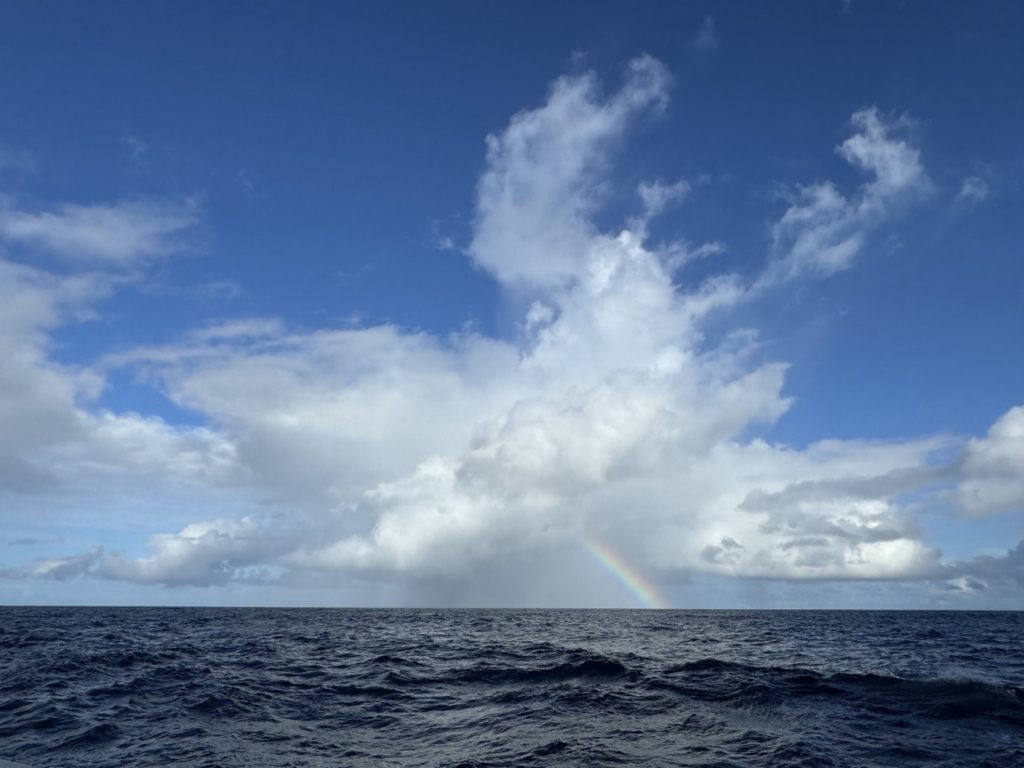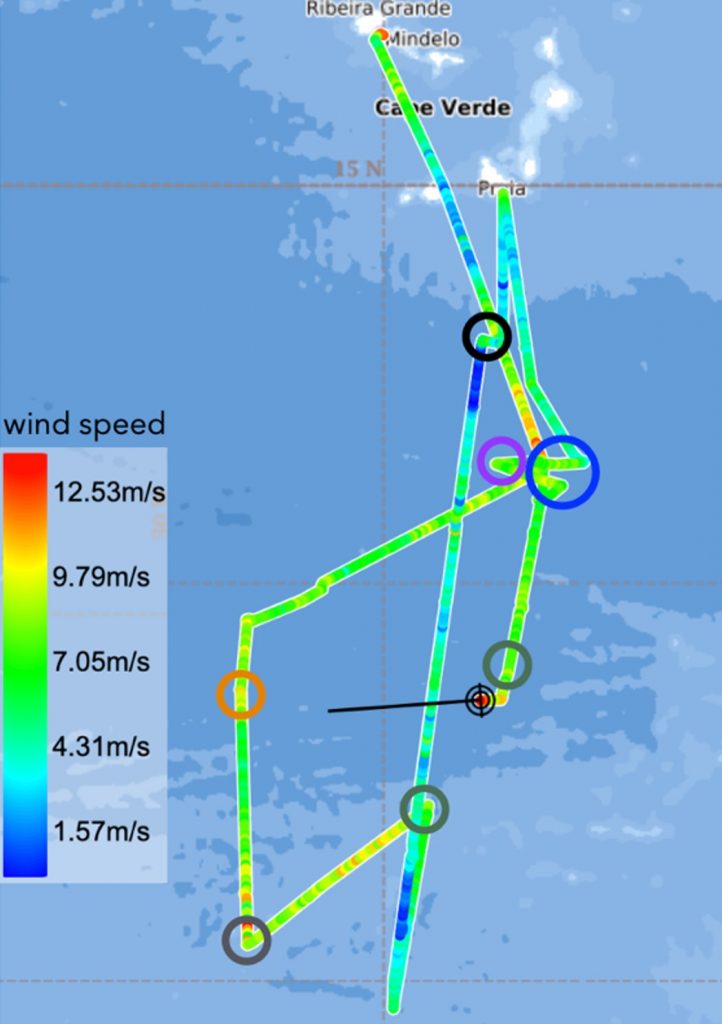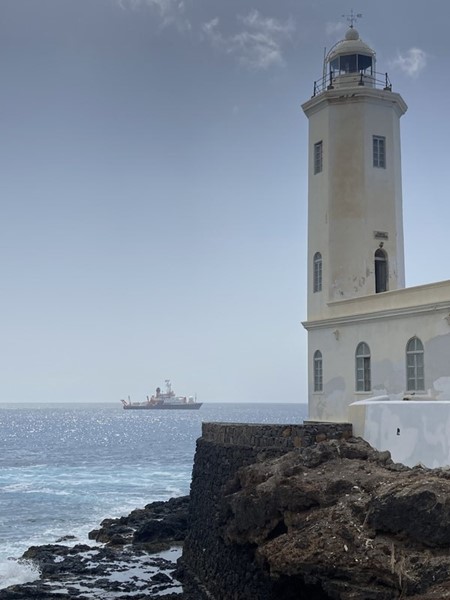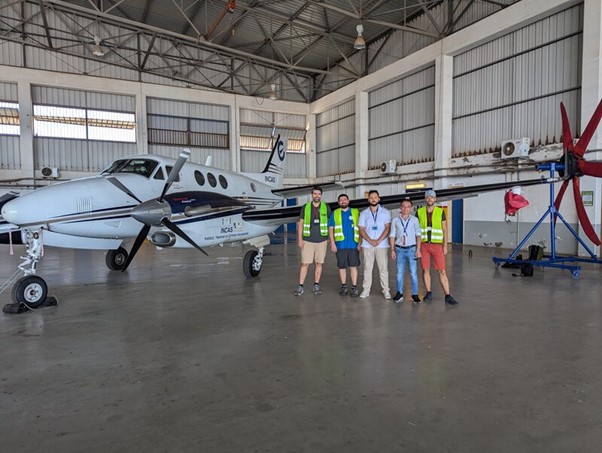The start of September marked the end of the beginning for the ORCESTRA campaign, which for three weeks took to the sea and sky around Cape Verde to probe the clouds and aerosols of the tropical Atlantic and validate EarthCARE’s instruments.
We’ve already brought you a day-by-day account of ESA Campaign Manager Jonas Von Bismarck’s first week with ORCESTRA, which saw the first ever underflights of EarthCARE, ESA’s cloud and aerosol mission.
Now it’s time to catch up with what’s been going on since 18 August 2024, thanks to Yuting Wu of the Max Planck Institute for Meteorology who has been documenting the campaign wonderfully.
From the sea to the sky, it’s been an exciting two weeks.
Sailing the open ocean
The second half of the Cape Verde element of the campaign brought a great deal of sea sickness to the crew aboard the Meteor, due to the rough sea.
Its route would take the ship south, aiming to reach one of the HALO aircraft’s upcoming measuring circles.
On its journey, the crew released radiosondes –weather research balloons equipped with all sorts of atmospheric measuring tools- every three hours.
At least the choppy conditions brought rainbows along with them.

A rainbow seen from the Meteor research ship. (Florida State University-Allison Wing)
After five days at sea, the Meteor aligned itself with EarthCARE’s orbit, adding yet more invaluable data to help calibrate and validate the satellite’s instruments.

The route of the Meteor ship so far. (Max Planck Institute for Meteorology-Daniel Klocke)
Excitingly, while the Meteor was heading full steam towards the southern edge of the intertropical convergence zone, the drones of the STRINQS element of ORCESTRA finally arrived in Mindelo.
That meant, 50 radiosondes and lots of science later, the ship would turn right around to pick up its new, drone-laden crew, and handily enough to pick up some spare parts in the meantime.
We’ll follow the Meteor’s journey over to Barbados in a future installment of the blog!

The Meteor seen from the coast of Praia, Cape Verde. (University of Oslo-Robert Oscar David)
EarthCARE’s angels in the sky
By the time it came to HALO’s fifth flight of the ORCESTRA campaign, the conditions in the air were as challenging as those on the sea.
Perhaps the turbulence was unsurprising, considering the really deep convection and cloud heights over 15 km – higher than the HALO aircraft can fly.
Still, the flight was a success, even though measurements were difficult – and the aircraft even performed a double pirouette!
Other aircraft were in on the action, too, with MAESTRO’s ATR-42 meeting EarthCARE northwest of Sal, and CELLO’s KingAir coordinating with the ATR-42 to meet EarthCARE in a spiral ascent.

The CELLO team in Praia, Cape Verde. (ESA-Jonas Von Bismarck)
Later in the week, all three aircraft would at one point meet in the skies over Cape Verde. On one particularly eventful day, the ATR-42 flew off the planned track when the MAESTRO team spotted some deep convective systems in reach.
We’re here for the big thunderstorms, after all!
The team was delighted to be able to sample its development while flying around it, and left Cape Verde a very happy team indeed.
Blowing up balloons
Let’s not forget the teams on the solid ground, either.
The radiosonde team has been sending up research balloons every six hours each and every day, often more when there are planes taking measurements overhead.
The MAESTRO team, with support from PERCUSION, has been launching radiosondes from the local meteorological institute, INMG.
On Saturday at 06:50 Barbados Local Time, the PERCUSION and SCORE teams will launch the first radiosondes from Barbados -again every six hours for the duration of the campaign- as the Caribbean part of the campaign begins in earnest.
See you there!
Thanks to Yuting Wu for her contribution to this blog. Find out more about ORCESTRA via the campaign website and blog, and you can discover more about EarthCARE on the ESA website.








Discussion: no comments